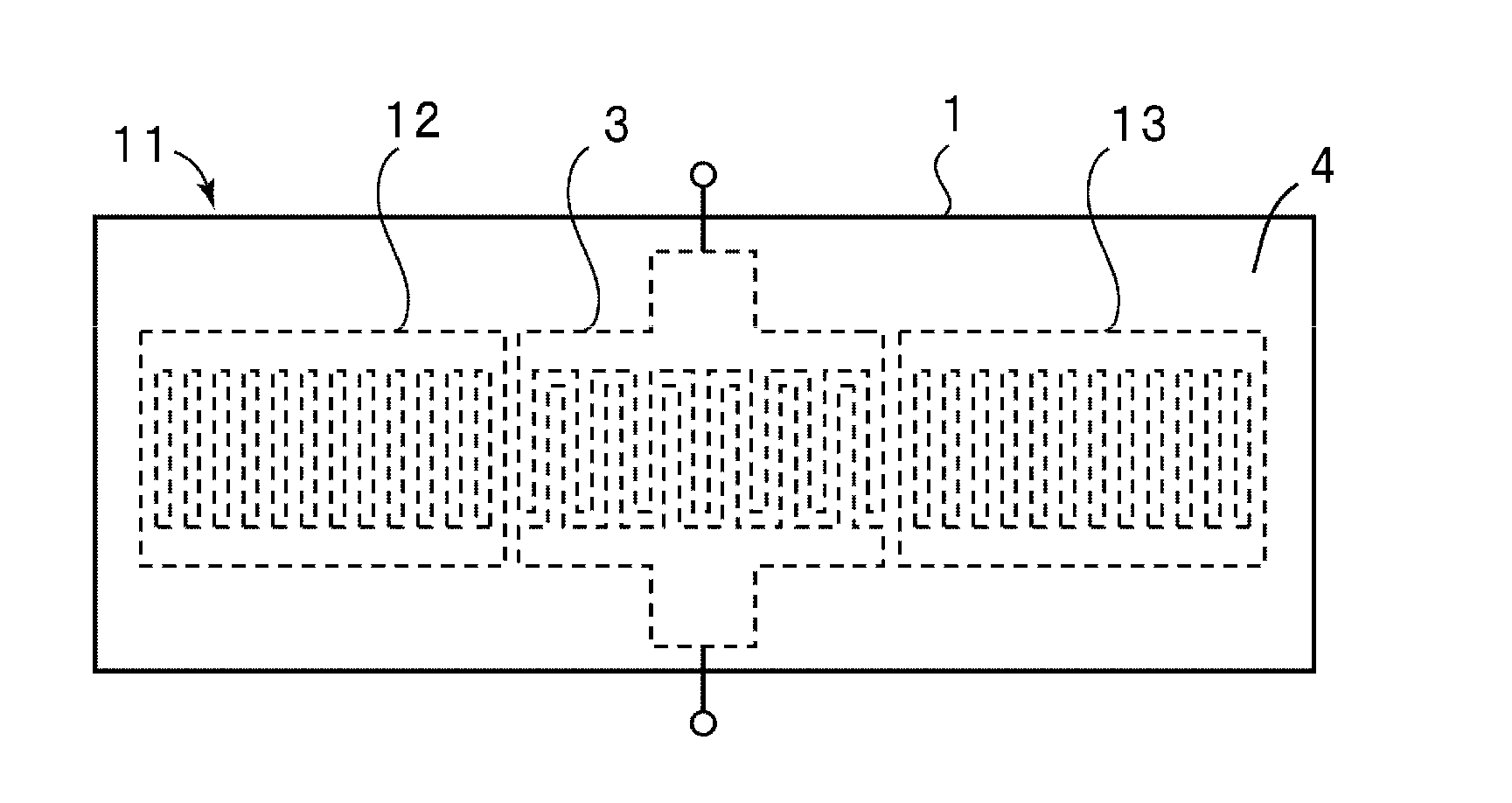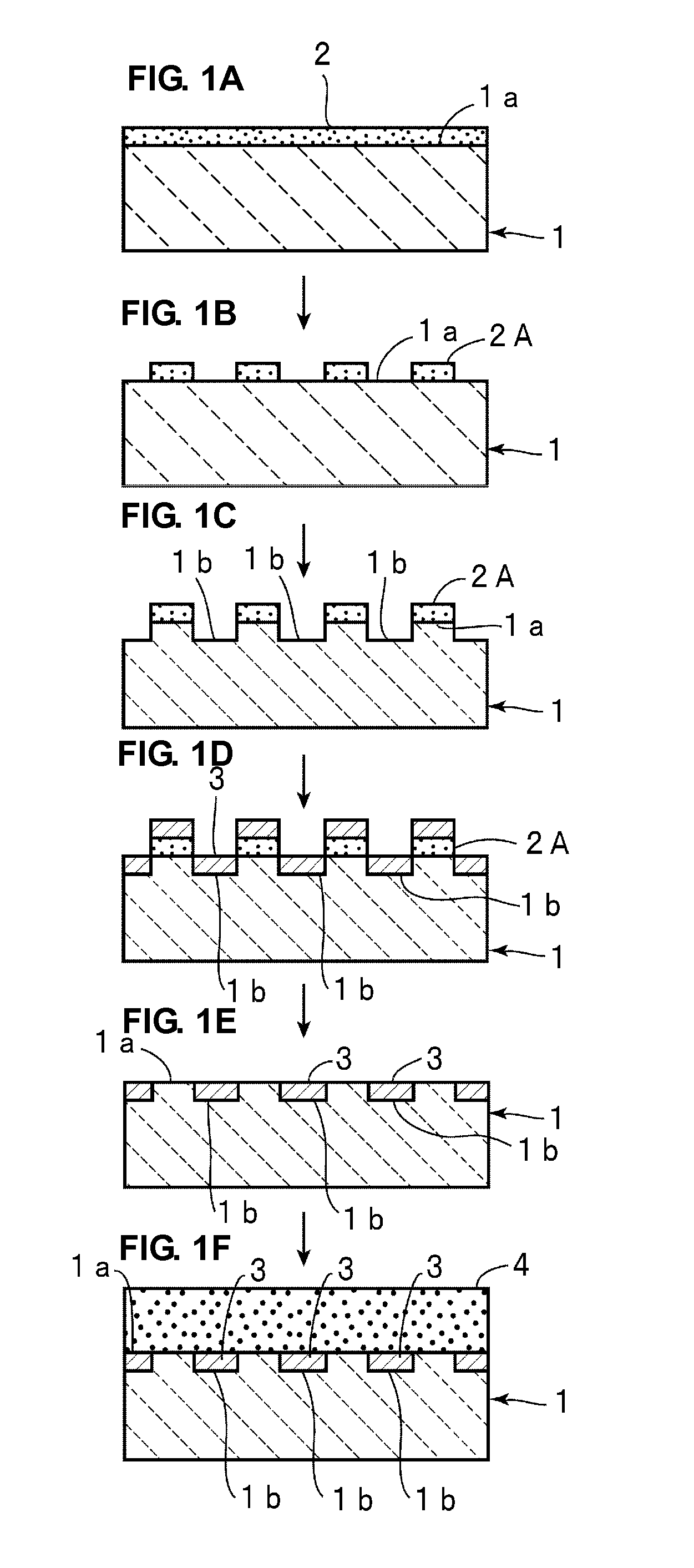Boundary acoustic wave device
a acoustic wave and device technology, applied in piezoelectric/electrostrictive/magnetostrictive devices, piezoelectric/electrostriction/magnetostriction machines, electrical equipment, etc., can solve the problem that the thickness of the idt electrode the surface of the siosub>2 /sub>layer cannot be prevented, and the idt electrode thickness increases the height of irregularities. a
- Summary
- Abstract
- Description
- Claims
- Application Information
AI Technical Summary
Benefits of technology
Problems solved by technology
Method used
Image
Examples
Embodiment Construction
[0045]Preferred embodiments of the present invention will be described below with reference to the accompanying drawings
[0046]A method for manufacturing a boundary acoustic wave device according to a preferred embodiment of the present invention is described below with reference to FIGS. 1A to 1F.
[0047]As shown in FIGS. 1A and 1A, a LiNbO3 substrate defining a piezoelectric substrate is prepared.
[0048]A photoresist layer 2 is formed over the upper surface 1a of the LiNbO3 substrate 1. The photoresist layer 2 can preferably be formed from any photoresist material that is resistant to reactive ion etching (RIE) which is performed later. In this example, a positive resist, AZ-1500™, available from Clariant (Japan) K. K., for example, is preferably used. In this example, the thickness of the photoresist layer 2 is preferably about 2 μm.
[0049]The photoresist layer 2 is patterned such that the photoresist layer is exposed to light and then developed, whereby a photoresist pattern 2A is fo...
PUM
 Login to View More
Login to View More Abstract
Description
Claims
Application Information
 Login to View More
Login to View More - R&D
- Intellectual Property
- Life Sciences
- Materials
- Tech Scout
- Unparalleled Data Quality
- Higher Quality Content
- 60% Fewer Hallucinations
Browse by: Latest US Patents, China's latest patents, Technical Efficacy Thesaurus, Application Domain, Technology Topic, Popular Technical Reports.
© 2025 PatSnap. All rights reserved.Legal|Privacy policy|Modern Slavery Act Transparency Statement|Sitemap|About US| Contact US: help@patsnap.com



